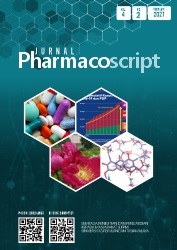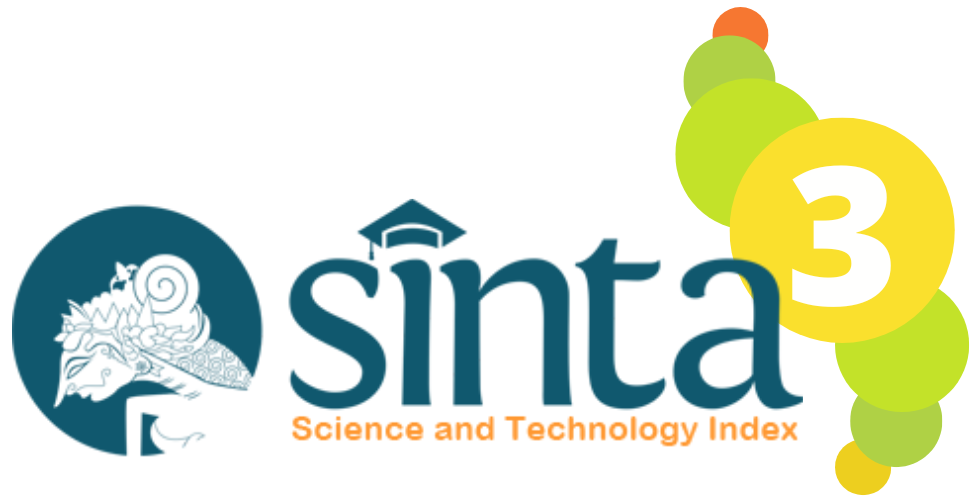PENGARUH EKSTRAK ETANOL 70% RIMPANG BANGLE (Zingiber purpureum Roxb.) DALAM MENGHAMBAT PERTUMBUHAN Tricophyton rubrum SECARA in vitro.
DOI:
https://doi.org/10.36423/pharmacoscript.v4i2.616Keywords:
Ekstrak Etanol, Trichophyton rubrum, Zingiber purpureum. RoxbAbstract
Rimpang bangle (Zingiber purpureum Roxb.) digolongkan sebagai rempah-rempah yang memiliki khasiat obat, seperti rimpangnya yang dapat dimanfaatkan sebagai bumbu dapur dan bahan pengobatan. Rimpang bangle mengandung senyawa kimia diantaranya adalah minyak atsiri, saponin, tanin, alkaloid, dan terpenoid. Zingiber purpureum Roxb. merupakan salah satu rimpang yang dipercaya memiliki khasiat untuk mengobati berbagai penyakit, salah satunya penyakit yang disebabkan oleh jamur. Penelitian ini bertujuan untuk mengetahui daya hambat ekstrak etanol 70% rimpang bangle (Zingiber purpureum Roxb.) terhadap pertumbuhan jamur Tricophyton rubrum. Uji daya hambat ekstrak etanol 70% rimpang bangle (Zingiber purpureum Roxb.) terhadap pertumbuhan jamur Tricophyton rubrum dilakukan dengan menggunakan Metode Kirby-Bauer. Hasil penelitian yang diperoleh, ekstrak etanol 70% rimpang bangle (Zingiber purpureum Roxb.) berpengaruh dalam menghambat pertumbuhan jamur Tricophyton rubrum dari konsentrasi 10% rata-rata zona hambat yang terbentuk sebesar 5,66 mm, 20% sebesar 10 mm; 30% sebesar 12 mm; 40% sebesar 13,66 mm; 50% sebesar 16,33 mm; 60% sebesar 17,66 mm; 70% sebesar 20,66 mm; 80% sebesar 24,23 mm; 90% sebesar 28,33 mm; dan 100% sebesar 43,33 mm. Berdasarkan hasil penelitian yang diperoleh tersebut menunjukkan bahwa rimpang bangle (Zingiber purpureum Roxb.) berpotensi sebagai antijamur.
References
ALFahdawi Shakir M. S. and Marwan Talib Joudah. (2020). Study On Antibacterial And Antifungal Activity Of Ginger (Zingiber officinale) On Selected Pathogenic Microorganism. Biochem. Cell. Arch. 20 (2), pp. 4629-4633.
Astuti, T. B. (2013). Uji AKtivitas Antimikroba Ekstrak Etanol 70% Rimpang Bangle (Zingiber purpureum Roxb..) terhadap Bakteri Staphylococcus aureus ATCC 25925 dan Jamur Microsporum canis secara in vitro. Skripsi. Fakultas Kedokteran dan Ilmu Kesehatan Program Studi Farmasi. UIN Syarif Hidayatullah Jakarta.
Cappucino, JG.& Sherman. (1987). N, Microbiology : A Laboratory Manual, The Benjamn/Cummings Publishin Company: Icn Clifornia
Citradewi A, Sumarya, I M. , Juliasih, N. K. A. (2019). Daya Hambat Ekstrak Rimpang Bangle (Zingiber purpureum Roxb...) Terhadap Pertumbuhan Bakteri Staphylococcus aureus. Widya Biologi. 1 (1): 45-53.
Gayathri G, S. Gomathi1, V. Ambikapathy and A. Panneerselvam. (2021). Comparative Study Of Antimicrobial Activity On Fresh And Dried Zingiber officinale rosc. Asian Journal of Advances in Medical Science. 2(4): 16-23.
Depkes RI. (2000). Parameter Standar Umum Ekstrak Tumbuhan Obat. Direktorat Jendral Pengawasan Obat dan Makanan: Jakarta.
Irianto. (2014). Bakteriologi, Mikologi, dan Virologi Panduan Medis dan Klinis. ALFABETA: Bandung.
Ismaini, L. (2011). Aktivitas Antifungi Ekstrak (Centella asiatica (L.)) Urban Terhadap FungiPatogen pada Daun Anggrek (Bulbophyllum flavidiflorum Carr). Jurnal Penelitian Sains. 14 (1).
Kamazeri Tg Siti Amirah Tg, Othman Abd Samah, Muhammad Taher, Deny Susanti, Haitham Qaralleh. Antimicrobial activity and essential oils of Curcuma aeruginosa, Curcuma mangga, and Zingiber cassumunar from Malaysia. Asian Pacific Journal of Tropical Medicine.
Marliani L. (2012). Aktivitas Antibakteri dan Telaah Senyawa Komponen Minyak Atsiri Rimpang Bangle (Zingiber cassumunar Roxb..). Prosiding Seminar Nasional Penelitian dan PKM : Sains, Teknologi dan Kesehatan. 3 (1).
Mozer H. (2015). Uji Antifitas Antifungi Ekstrak Etanol 96% Kulit Batang Kayu Jawa (Lannea coromandelica) terhadap Aspergillus niger, Candida albicans dan Trichophyton rubrum. [Skripsi]. Fakultas Kedokteran dan Ilmu Kesehatan Program Studi Farmasi. UIN Syarif Hidayatullah Jakarta.
Olivia, F. , Alam, S., & Hadibroto, I. (2004). Seluk Beluk Food Suplemen. Jakarta: Gramedia. pp. 49
Rahmi A, Erfan Roebiakto, Leka Lutpiatina. (2016). Potensi Ekstrak Rimpang Kencur (Kaemperia galanga.L) Menghambat Pertumbuhan Candida albican. Medical Laboratory Technology Journal. 2 (2) : 70-76.
Sakhti et al. (2011). Pharmacological Screening of Daturametel. International journal of pharmaceutical science and health care.
Setiabudy, R. & Bahry, B. (2011). Obat Jamur. In: S. G. Gunawa, R. Setiabudy, Nafriadi & Elysabeth, eds Farmakologi dan Terapi ed 5, Badan Penerbit FKUI: Jakarta.pp 581
Tiwari et al. (2011). Department of Pharmaceutical Sciences. Dalam Lovely School of Pharmaceutical. Phagwara: Punjab.
Pithayanukul P, J. Tubprasert, M. Wuthi-Udomlert. (2006). In Vitro antimicrobial activity of Zingiber cassumunar (Plai) oil and a 5% Plai oil gel. Phytotherapy Research. 21 (2).
Volk, W.A and M.F. Weeler. (1993). Microbiology Laboratory : Fundamentals And Apllications. 2nd Edition. Pearson Education Inc: New Jersey. USA.
Wahyuningtyas, Endang. (2008). Pengaruh Ekstrak Graptophyllum pictum Terhadap Pertumbuhan Candida albicans Pada Plat Gigi Tiruan Resin Akrilik. Indonesian Journal of Dentistry. Vol 15 (3): 188.
Wulansari, L., (2009). Kajian ekstrak pandan wangi (Pandanus amryllifolius Roxb..) sebagai repellent bagi nyamuk Aedes aegypti, Fakultas Biologi. Universitas Jendral Soedirman, Purwokerto
Downloads
Published
Versions
- 2021-08-26 (4)
- 2021-08-23 (3)
- 2021-08-23 (2)
- 2021-08-18 (1)
Issue
Section
License
Copyright (c) 2021 Khusnul Khusnul

This work is licensed under a Creative Commons Attribution-ShareAlike 4.0 International License.
Authors who publish with this journal agree to the following terms:
- Authors retain copyright and grant the journal right of first publication, with the work [SPECIFY PERIOD OF TIME] after publication simultaneously licensed under a Creative Commons Attribution License that allows others to share the work with an acknowledgement of the work's authorship and initial publication in this journal.
- Authors are able to enter into separate, additional contractual arrangements for the non-exclusive distribution of the journal's published version of the work (e.g., post it to an institutional repository or publish it in a book), with an acknowledgement of its initial publication in this journal.
- Authors are permitted and encouraged to post their work online (e.g., in institutional repositories or on their website) prior to and during the submission process, as it can lead to productive exchanges, as well as earlier and greater citation of published work (See The Effect of Open Access).









